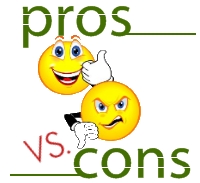Effective communication is the very essence of information design. (Baer, 13) The process of information design contains few steps that can make the design effective.
The first step of the Information Design process is to determine who the targeted audience is. A good way to do this is by asking some of the basic questions: What do you want to achieve? Who will use it? Where will they use it? When will they use it? Why will they use it? And how will they use it? Finding the answers to these questions you will be able to adequately develop a strategy for the rest of the process.
STEP #2:
 The second step is to create and present a creative brief. Kim Baer defines it as a “short document that typically runs anywhere from two to ten pages, depending on the scope of the project. This document outlines the pertinent information about the project so that the entire team has a clear sense of the project’s background and goals” (Baer, 50) It gets the entire team up to speed on the project background and goals. The brief usually contains four parts. “The creative brief acts as a single point of communication to ensure that everyone is on the same page as the project moves forward.” – (Baer, 52)
The second step is to create and present a creative brief. Kim Baer defines it as a “short document that typically runs anywhere from two to ten pages, depending on the scope of the project. This document outlines the pertinent information about the project so that the entire team has a clear sense of the project’s background and goals” (Baer, 50) It gets the entire team up to speed on the project background and goals. The brief usually contains four parts. “The creative brief acts as a single point of communication to ensure that everyone is on the same page as the project moves forward.” – (Baer, 52)STEP #3:
 The third step in the process of Information Design is to determine persona and scenarios. All of your data now comes into play as described by Kim Baer, “A persona is a brief profile of a typical user that outline attributes, desires, needs, habits, and capabilities of a typical user” (Baer,58). It is an important step that helps the team understands the target audiences better and also helps the designers better understand how the audience reacts to the design.
The third step in the process of Information Design is to determine persona and scenarios. All of your data now comes into play as described by Kim Baer, “A persona is a brief profile of a typical user that outline attributes, desires, needs, habits, and capabilities of a typical user” (Baer,58). It is an important step that helps the team understands the target audiences better and also helps the designers better understand how the audience reacts to the design.STEP #4:
 The final step of the Information Design process is coming up with a prototype. A prototype is a model that gives you an idea about how the final product of your information design process will look like. Once a prototype is created then begins testing of design. Different types of testing techniques are used such as concept tests, participatory design, focus groups, usability testing, and beta testing.
The final step of the Information Design process is coming up with a prototype. A prototype is a model that gives you an idea about how the final product of your information design process will look like. Once a prototype is created then begins testing of design. Different types of testing techniques are used such as concept tests, participatory design, focus groups, usability testing, and beta testing.Reference:
Baer, Kim. Information Design Workbook. Beverly: Rockport Publishers, Inc., 2009. Print.
Cross, Neal. Information Design Course, Empire State College. 2012.
Cross, Neal. Information Design Course, Empire State College. 2012.








